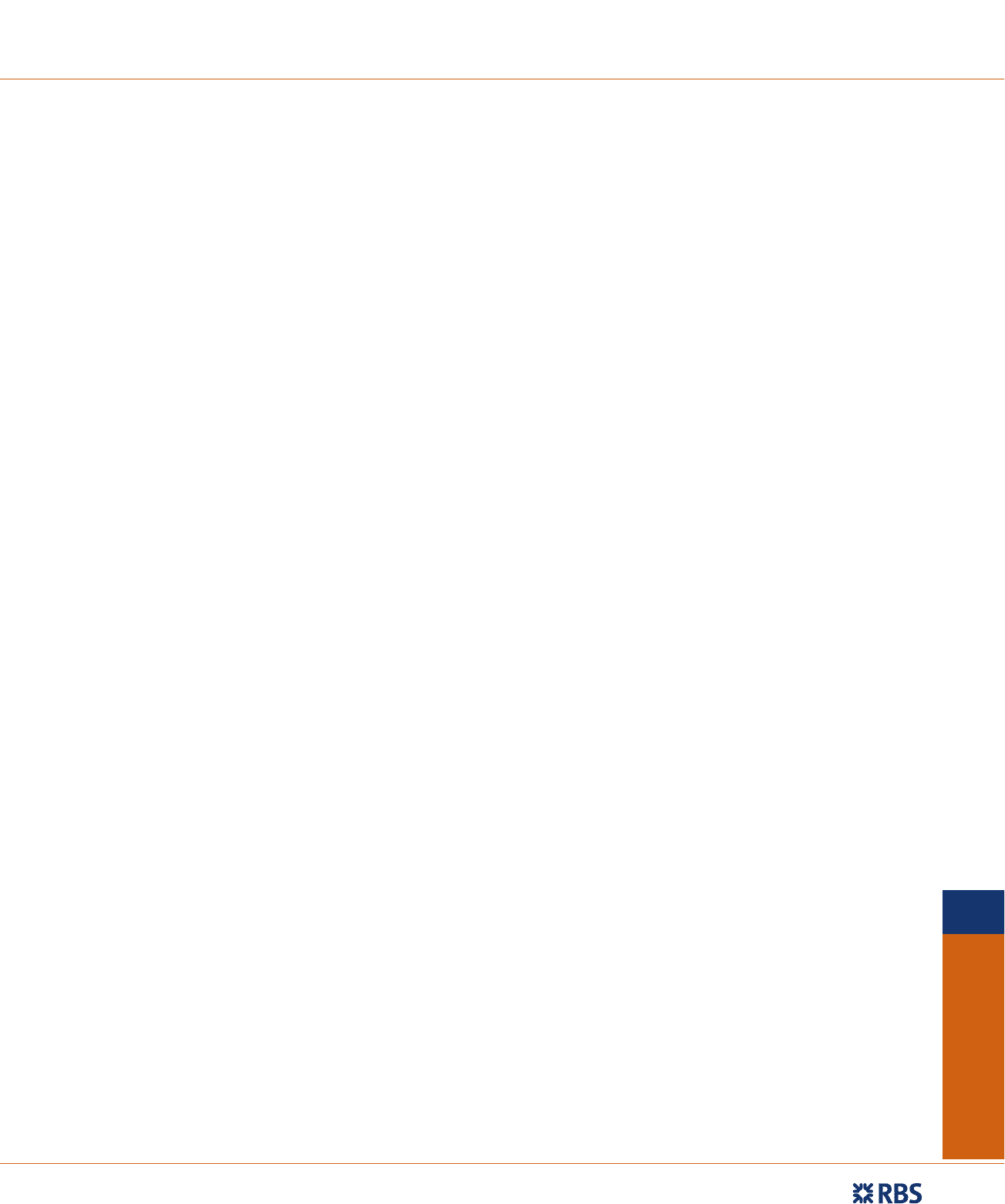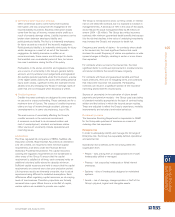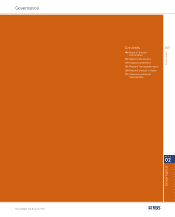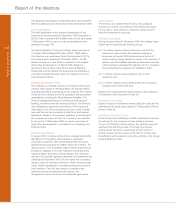RBS 2005 Annual Report Download - page 107
Download and view the complete annual report
Please find page 107 of the 2005 RBS annual report below. You can navigate through the pages in the report by either clicking on the pages listed below, or by using the keyword search tool below to find specific information within the annual report.
section
01
Operating and
financial review
105
Operating and financial review
Annual Report and Accounts 2005
c) Commercial other insurance contracts
Other commercial claims come mainly from business
interruption and loss arising from the negligence of the
insured (liability insurance). Business interruption losses
come from the loss of income, revenue and/or profit as a
result of property damage claims. Liability insurance can be
broken down between employers liability and
public/products liability. The first is to indemnify employees
for injury caused as a result of the insured’s negligence.
Public/products liability is to indemnify a third party for injury
and/or damage as a result of an act of the Insured’s
negligence. As liability insurance is written on an
occurrence basis, these covers are still subject to claims
that manifest over a substantial period of time, but where
loss was in existence during the life of the policy.
Fluctuations in the social, economic and legislative climate
are a source of uncertainty in the Group’s general liability
account, and in particular court judgements and legislation
(for example periodic payments under the Courts Act, a review
of the Ogden tables used by the courts when setting personal
injury claim values), significant events (for example terrorist
attacks) and any emerging new heads of damage, types of
claim that are not envisaged when the policy is written.
d) Creditor insurance
Creditor insurance contracts are designed to cover payments
on secured or unsecured lending. These contracts are for a
maximum term of 5 years. The causes of creditor insurance
claims are loss of income through accident, sickness or
unemployment or, in some circumstances, loss of life.
The main source of uncertainty affecting the Group's
creditor accounts is the economic environment.
A recession could lead to an increased number and
cost of unemployment, accident and sickness claims.
Other sources of uncertainty include operational and
reserving issues.
Life business
The three regulated life companies of RBSG, NatWest Life
Assurance Limited, Royal Scottish Assurance plc and Direct
Line Life Limited, are required to meet minimum capital
requirements at all times under the Financial Service
Authority’s Prudential Sourcebook. The capital resources
covering the regulatory requirement are not transferable to
other areas of the Group. To ensure that the capital
requirement is satisfied at all times, each company holds an
additional voluntary buffer above the absolute minimum.
Sufficient capital resources are held to ensure that the capital
requirements are covered over a two year projection period.
Life insurance results are inherently uncertain, due to actual
experience being different to modelled assumptions. Such
differences affect regulatory capital resources, as do varying
levels of new business. Therefore, projections are formally
reviewed twice a year. Where there is a shortfall of capital,
various options are available to provide new capital.
The Group is not exposed to price, currency, credit, or interest
risk on unit linked life contracts but it is exposed to variation in
management fees. A decrease of 10% in the value of the assets
would reduce the asset management fees by £5 million per
annum (2004 – £5 million). The Group also writes insurance
contracts with minimum guaranteed death benefits that expose
it to the risk that declines in the value of underlying investments
may increase the Group’s net exposure to death risk.
Frequency and severity of claims – for contracts where death
is the insured risk, the most significant factors that could
increase the overall frequency of claims are epidemics or wide
spread changes in lifestyle, resulting in earlier or more claims
than expected.
For contracts where survival is the insured risk, the most
significant factor is continued improvement in medical science
and social conditions that would increase longevity.
For contracts with fixed and guaranteed benefits and fixed
future premiums, there are no mitigating terms and conditions
that reduce the insurance risk accepted. Participating
contracts can result in a significant portion of the insurance
risk being shared with the insured party.
Sources of uncertainty in the estimation of future benefit
payments and premium receipts – the Group uses base tables
of standard mortality appropriate to the type of contract being
written and the territory in which the insured person resides.
These are adjusted to reflect the Group’s experience, mortality
improvements and voluntary termination behaviour.
Purchased insurance
The Insurance Sourcing Department is responsible to GEMC
for the Group-wide purchase of insurance as a means of
reducing other risk exposures.
Enterprise risk
In order to adequately identify and manage the full range of
Enterprise risk, the Group has separately defined operational
and external risk:
Operational risk is defined as the risk arising within the
organisation from:
•People – risks arising from an inappropriate level of staff,
inadequately skilled or managed.
•Process – risk caused by inadequate or failed internal
processes.
•Systems – risks of inadequately designed or maintained
systems.
•Assets – risk of damage, misappropriation or theft of the
Group’s physical, logical and intangible assets.
























